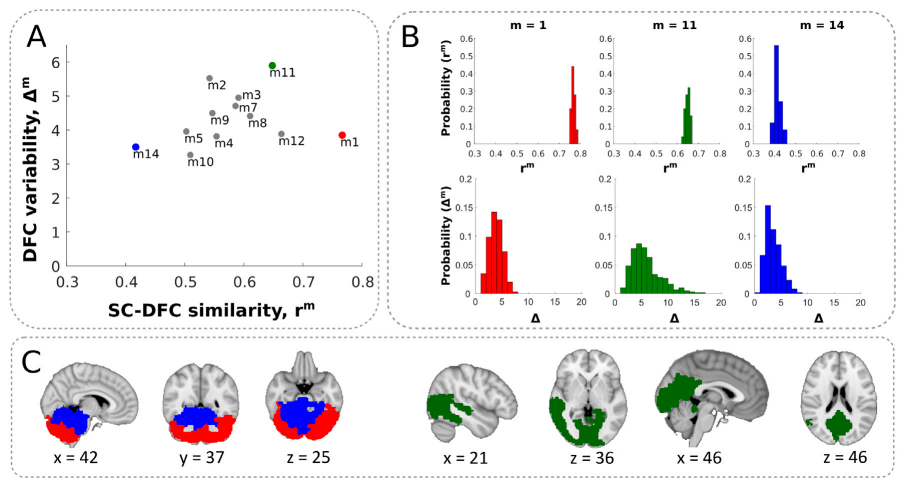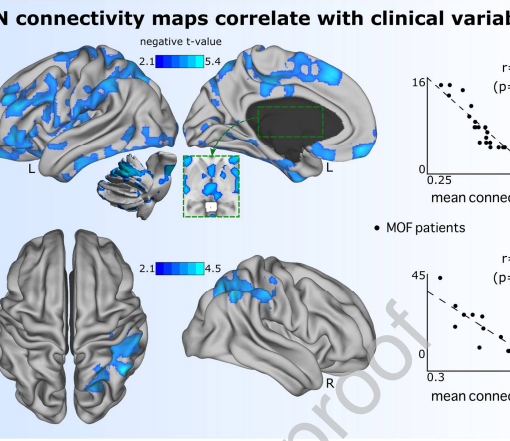I Fernandez-Iriondo, A Jimenez-Marin, I Diez, P Bonifazi, SP Swinnen, MA Munoz, JM Cortes.
Low variability of dynamical functional connectivity in cerebellar networks. Neurocomputing . In press, 2021 biorxiv: [pdf] article: [pdf]
Abstract
Brain networks can be defined and explored using different types of connectivity. Here, we studied P=48 healthy participants with neuroimaging state-of-the-art techniques and analyzed the relationship between the actual structural connectivity (SC) networks (between 2514 regions of interest covering the entire brain and brainstem) and the dynamical functional connectivity (DFC) among the same regions. To do so, we focused on a combination of two metrics: the first one measures the degree of SC-DFC similarity –i.e. how much functional correlations can be explained by structural pathways– and the second one, the intrinsic variability of DFC networks across time. Overall, we found that cerebellar networks have smaller DFC variability than other networks in the cerebrum. Moreover, our results clearly evidence the internal structure of the cerebellum, which is divided in two differentiated networks, the posterior and anterior parts, the latter also being connected to the brain stem. The mechanism for keeping the DFC variability low in the posterior part of the cerebellum is consistent with another finding, namely, it exhibits the highest SC-DFC similarity among all other sub-networks, i.e. its structure constrains very strongly its dynamics. On the other hand, the anterior part of the cerebellum, which also exhibits a low level of DFC variability, has the lowest SC-DFC similarity, suggesting very different dynamical mechanisms. It is likely that its connections with the brain stem –which regulates sleep cycles, cardiac and respiratory functioning– might have a critical role in DFC variations in the anterior part. A lot is known about cerebellar networks, such as having extremely rich and complex anatomy and functionality, connecting to the brainstem, and cerebral hemispheres, and participating in a large variety of cognitive functions, such as movement control and coordination, executive function, visual-spatial cognition, language processing, and emotional regulation. However, as far as we know, our findings of low variability in the dynamical functional connectivity of cerebellar networks and its possible relation with the above functions, have not been reported so far. Further research is still needed to shed light on these findings.





